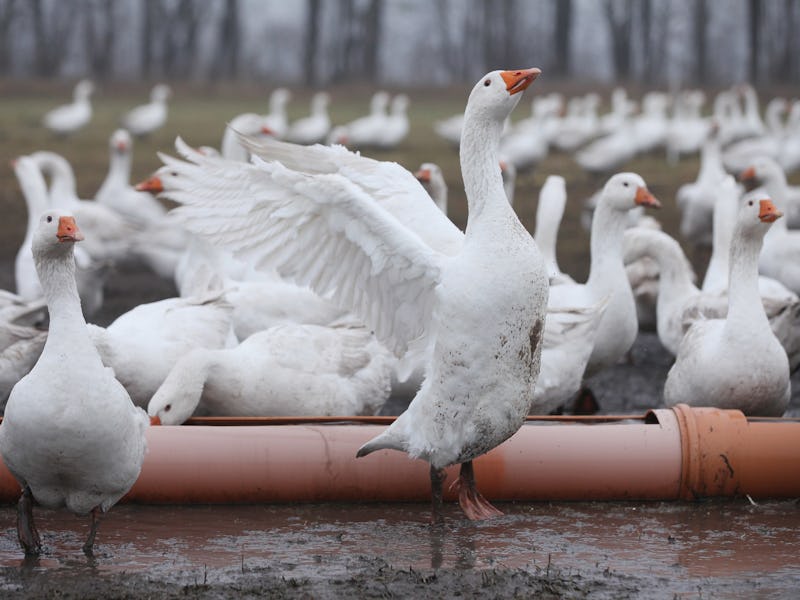Shuttlecocks Can Only Be Made of the Left Wings of Geese

When you’re thinking badminton, you’re probably not thinking about animal violence — or space travel, for that matter. But let badminton astonish you: Shuttlecocks get their insane speed because they’re made of only the left wings of geese.
That’s right, the right wings simply won’t do. In an exhaustive profile of the sport for The Stranger, author Brandon Kiley offers the following tidbit:
The romance of badminton is embodied by its shuttlecock: 16 feathers, preferably from a goose (though a duck will do), and preferably from the goose’s left wing, are threaded together and glued to a piece of cork.
Pray what did the right wing do wrong? Seems kind of wasteful to the untrained eye to just choke off a goose and then use only its left wing for the “romantic” sport of badminton. Animal-rights activists have pointed out as much, but badminton players and product designers are meh about their protests: Shuttlecock geese are on their way to the butcher anyways to make us pillows and jackets. If the left wings weren’t used, they’d probably get tossed out anyways. (This isn’t the first time geese have fallen prey to human foibles, by the way.)
But back to the left goose wing in particular: It turns out geese wings are a lesson in aerodynamics and physics of the sport. Paisan Rangsikitpho, deputy president of the Badminton World Federation, tells Kiley that it all comes down to the different curvatures of the wings. Gather the 16 feathers of the left wing into a shuttlecock, and when smashed, it spins clockwise. But do the same with the right wing feathers of a goose and your shuttlecock spins counterclockwise — which totally screws with players.
What if you make a little cocktail of feathers on a shuttlecock to avoid being wasteful? Eight of the left wing, 8 of the right wing, for example? You get a flimsy shuttlecock that lacks its characteristic spin and instead sort of wobbles.
The left wing of a goose is instrumental to the unique physics of a shuttlecock. As we’ve written here at Inverse:
A recent study of the physics of the sport found that shuttlecocks flip over in just 20 milliseconds after contact with the racket. A hundred milliseconds later, and the birdie is perfectly aligned to its new direction of travel.
Maybe commentator Mary Carillo was onto something in her classic rant in Athens in 2004.